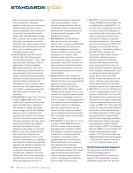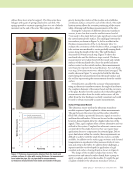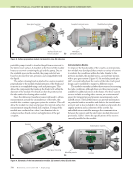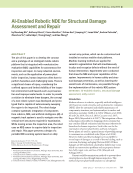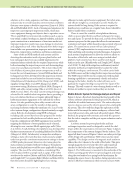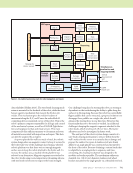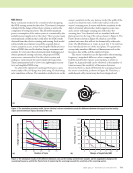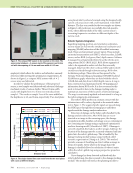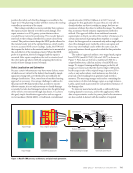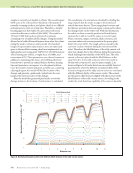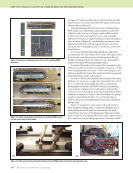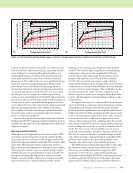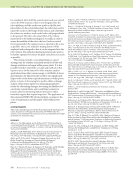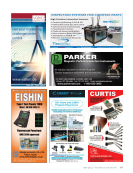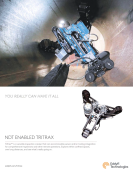740 M A T E R I A L S E V A L U A T I O N • J U L Y 2 0 2 1 solution, as it is a risky, expensive, and time-consuming endeavor due to several hazardous environmental conditions that may cause injury or death to inspectors (Lian et al. 2018 Ali and Habibullah 2019). Lack of training and experience for inspectors cause improper inspection results, which may cause equipment damage and injuries due to operation errors. This is amplified by environmental conditions such as opera- tion within confined workspaces, limited visibility, and inade- quate construction or maintenance of structures under test. Improper inspection results may cause damage to structures and equipment as well. Other fatal hazards from boiler inspec- tion include over pressurization, improper water treatment, flameouts, temperature conditions, and furnace explosions. State-of-the-art NDE methods and systems used for detecting discontinuities inside of power plant boilers and heat exchangers have been successfully implemented to minimize human-related risks for required inspections, while both automating the inspection process and decreasing diag- nosis errors and data uncertainties. This in turn reduces the risk of failure of power plant system components as well as lowers the cost of maintenance. Several NDE methods and techniques have been developed for this inspection environ- ment that include but are not limited to ultrasonic testing (Mandeliya and Vishwakarma 2018 Zhang et al. 2020), radi- ographic testing (Baba et al. 2009 Zhang et al. 2020), microwave testing (Korhonen and Ahola 2018 Zhang et al. 2020), and eddy current testing (Zhu et al. 2019 Liu et al. 2020 Yu et al. 2021). The eddy current testing technique was selected for AI-enabled robot integration due to providing a low-cost solution that does not require physically large or hefty measurement equipment to be onboard the robotic device. It is also possible to place eddy current coils in an array configuration to scale the number of data points, increasing resolution within the timeframe of a scan. For the robot system design, configuration depends entirely on appli- cation. Robotic development using NDE techniques including eddy current have been also proposed for similar operations for both mobile platforms and robotic arms. A bespoke configuration with NDE equipment was used for mapping the thickness of water pipelines made of metal, allowing for near-constant liftoffs against pipe walls (Miro et al. 2018). A wall-climbing robot platform was developed for thickness measurements of circulating fluidized bed boilers (Meng et al. 2018). In laboratory or inspection workspace settings, a static robot arm that may reach around a sample under test provides consistent measurement settings in terms of NDE probe placement. However, robot arms placed in static positions are limited without workspace boundaries hence, mobile platforms would be more applicable for larger samples. The size of the robot matters, considering if the robot is placed within a sample such as a pipe. If the robot attaches to the surface (Mattar and Kalai 2018 Kharkovsky and Zoughi 2007) or requires flight (Mattar and Kalai 2018), then the system should be lightweight or have strong adhesion to make up for heavier equipment. For robot arms, end-effector weight is a consideration as well. Finally, the system should be long-lasting. If the system is required to handle severe conditions on a regular basis, then it should be built to handle these conditions. There is a need for a mobile robot platform that may climb on power plant boilers and heat exchangers for inspec- tion and repair. To provide for this need, a novel robotic NDE system is proposed in this paper that allows for autonomous evaluation and repair within hazardous spaces inside of power plants. The autonomous system will use cyber-physical system (CPS) implementation to sweep across a steel plate while analyzing and repairing potential damages. A magnetic track system is implemented to allow the robot to adhere to the surface of the boiler and move using a tracked wheel platform. Such systems have been used for steel-based surfaces in the past (Kharkhovsky and Zoughi 2007 Kumar et al. 2018). To help with navigation, multisensory inertial odometry methods are implemented to localize the robot within the workspace environment. The robot carries both the NDE sensor and the tooling for live inspection and repair. The NDE sensor will be used in conjunction with machine learning capabilities to autonomously classify and analyze damage to the boiler. Finally, the robot will carry, as its payload, the required tooling necessary for live repair of the damage. This will consist of a wire cleaning brush as well as a friction stir welder to repair cracks as they are located. Mobile Robotic System for Damage Analysis and Repair Figure 1 shows a flowchart depicting the functionality of the robotic software subsystem for the proposed CPS, which is called the AI-enabled autonomy stack. The entire subsystem runs in a loop as soon as the robot is powered on, starting the AI system. The robot will then begin the exploration of the boiler until it has swept the entire workspace, collected and stored all necessary data, and made all needed repairs. When finished, the program will terminate and notify the operator that the task is complete and the post-repair evaluation can be conducted. A robotic system for power plant boiler and heat exchanger inspection must be designed to match the chal- lenges within the examination environment. Figure 2 depicts the components of the system designed by the authors. The upper left-hand corner of Figure 2 shows an earlier prototype of the design with a preliminary NDE sensor and no repair capability. The design consists of a magnetic track system to adhere the robot chassis to the walls of the boiler. This gives enough magnetic force to keep the robot and its payload attached to the boiler wall this capability is illustrated in Figure 2. The NDE sensor is mounted to the underside of the robot’s scanning gantry where it is pressed against and swept along the steel surface by a spring-loaded mechanism. By keeping the sensor close to the surface during operation, vari- ations in liftoff are minimized, which in turn increases NDE ME TECHNICAL PAPER w ai-enabled robotic nde for structural damage
J U L Y 2 0 2 1 • M A T E R I A L S E V A L U A T I O N 741 data reliability (Hellier 2013). The wire brush cleaning mech- anism is mounted to the backside of the robot, while the front houses a gantry mechanism that mounts the friction stir welder. This mechanism gives the welder freedom of movement along the X, Y, and Z axes. An embedded AI computing device is mounted on top of the robot. This is the robot’s primary computer responsible for all logic and control of the mechanical systems, as well as all LiDAR (light detec- tion and ranging), inertial, and visual sensors. This main computer also has sufficient memory to document and store all metadata associated with inspection and repair. This data can later be analyzed by an expert. As power plant boiler walls are made of steel, the robotic system design relies on magnetic contact to keep it secured to the boiler wall. One of the challenges faced using a wheeled robotic platform was that there was not enough magnetic surface area to keep the robot attached to the boiler wall. To increase the surface area, a tracked robotic platform was selected as an alternative. Magnetic segments are attached to the robot tracks using room-temperature vulcanizing silicone with steel mesh in between to improve the bond strength. One challenge being faced is steering the robot, as steering is dependent on the tracks having the ability to glide along the surface it is driving along. Because this robot has controllable flipper paddles that can be retracted, a proposed solution is to disengage these paddles on a single side, which should enhance the steering force in one direction. However, this functionality has yet to be tested or verified. An additional challenge is keeping the magnetic segments attached to the robot tracks, which tend to peel off over time. Alternative adhesives need to be investigated in future work. The next part of the robotic system design consists of a wire brush cleaning mechanism to remove debris from the wall’s surface for the sensor to accurately detect damage and prepare the surface for repair. A stainless steel wire brush affixed to an angle grinder was constructed and mounted to the front of the robot. Because obtaining a custom brush that is adaptable to an angle grinder is expensive and time- consuming, the cleaning mechanism was designed to be modular and easily repairable. The mechanism utilizes six standard 4 in. (10.16 cm) diameter stainless steel wheel brushes mounted to the angle grinder via a threaded steel rod. Lock in NDE space Execution Damage analysis Simultaneous localization and mapping (SLAM) Reasoning NDE probe Digital to analog IC Function generator Data management Data fusion and interpretation Odometry Tooling controller Planning Robot control Damage tracking Damage recognition Repair actuator Filtering functionality Data acquisition chip Probe actuator LiDAR Depth cam Moving the robotic system Encoder Inertial measurement unit SLAM GTSAM 3D mapping information fusion Figure 1. AI-enabled autonomy stack for robot navigation and repair. Material under test
ASNT grants non-exclusive, non-transferable license of this material to . All rights reserved. © ASNT 2025. To report unauthorized use, contact: customersupport@asnt.org



























































